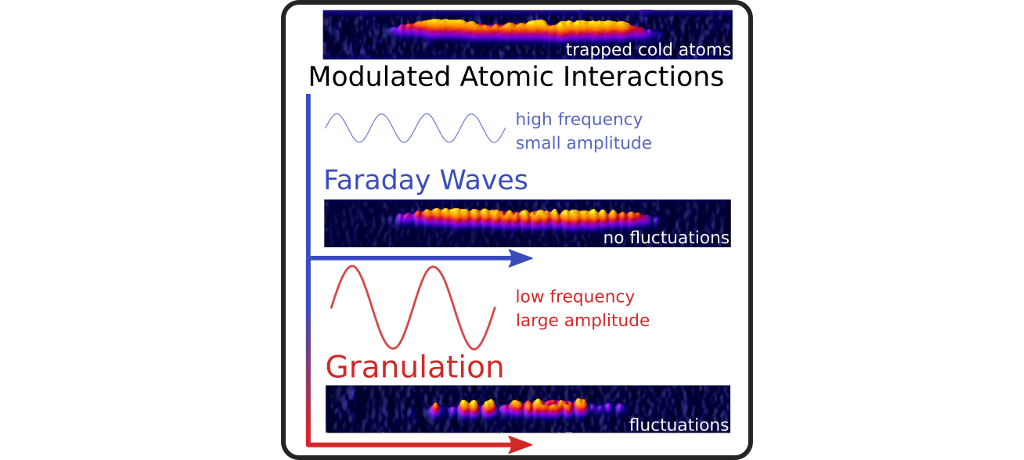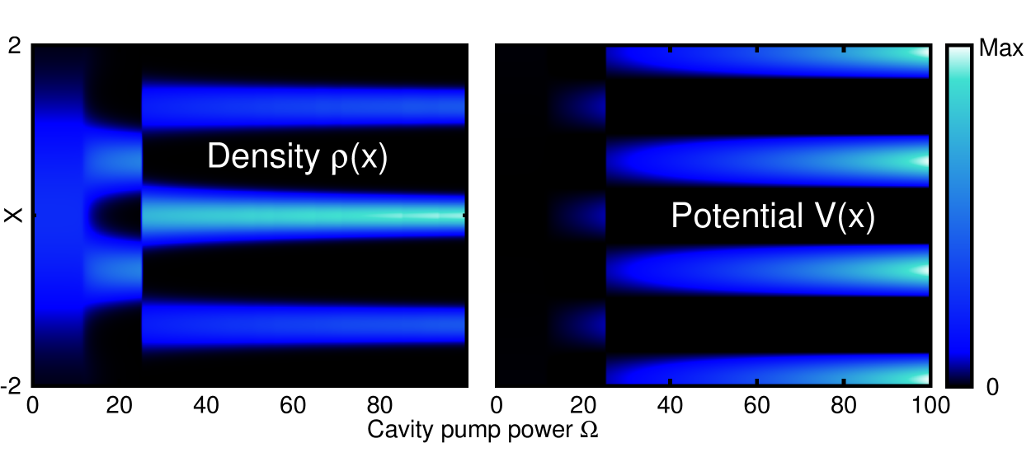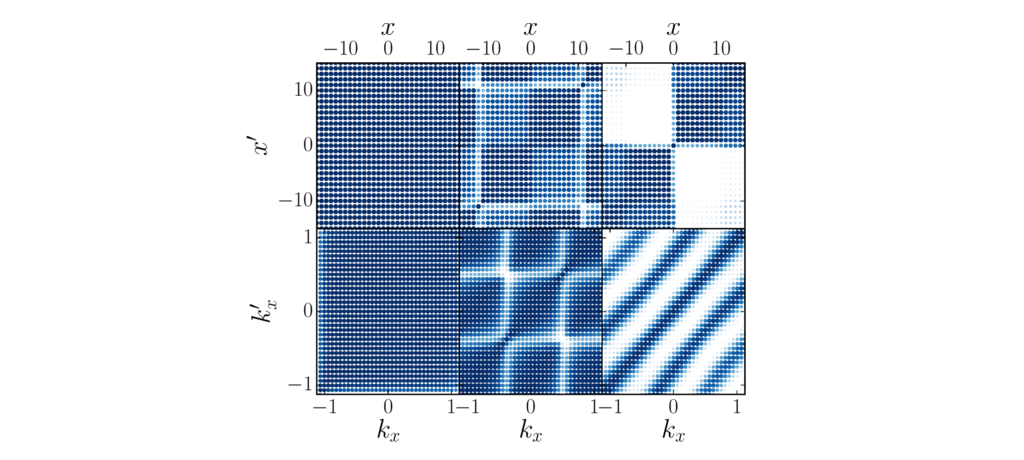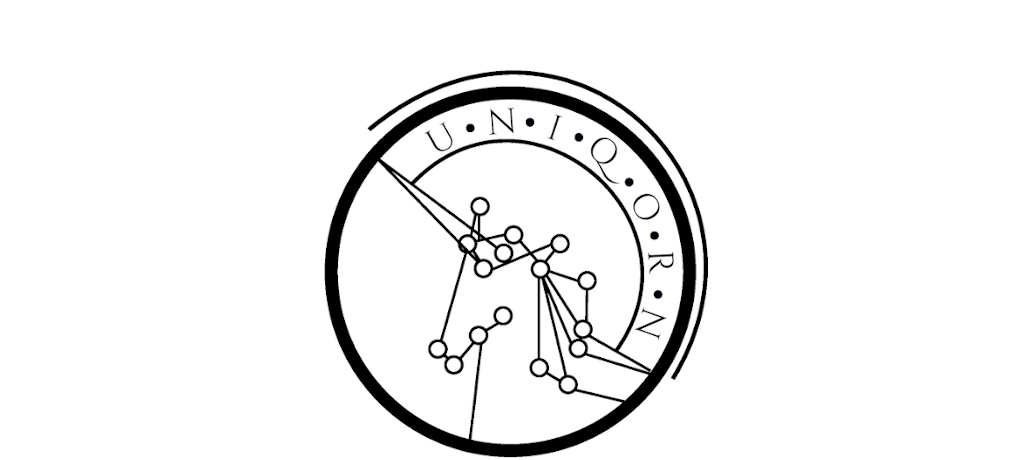PRX: Granulation and Faraday waves in driven quantum systems
Granular matter is typically the result of random pattern formation in a solid, like breaking a glass or pulverizing a rock into pieces of variable size. Faraday waves, aren't random; in contrast to granular matter, these waves are regular, standing, periodic patterns, seen for instance in liquids in a vessel that is shaken. Surprisingly, the quantum version of granulation and Faraday waves can be produced in the same quantum system: a gas of trapped atoms cooled very close to absolute zero temperature. When the strength of interactions between atoms is modulated, a Faraday pattern is produced if the modulation is fast and weak, and a granular state is formed if the modulation is slow and strong. Read more at arxiv:1707.04055 or Phys. Rev. X (2019).
Â
Faraday waves
Faraday waves in a Bose-Einstein condensate (BEC), a quantum fluid of ultra-cold atoms (see upper image) are triggered by a “shaking” which is realized by modulating the strength of the interactions between atoms via a time-dependent magnetic field. This shaking results in the formation of a one-dimensional Faraday wave pattern, shown in the middle figure. This pattern emerges only when the frequency of modulation is tuned to near a collective mode resonance, i.e., for a small-amplitude drive at high frequencies .
Â
Granulation
But, what happens at modulation frequencies that are far from resonance? The researchers discovered something startling and unpredicted: when the modulation frequency is far below a Faraday resonance, and the modulation is strong, the BEC breaks into “grains” of varying size, as shown in the lower image. The sizes of the grains are broadly distributed, and they persist for times even longer than the modulation time. Each realization of the experiment resulted in a different distribution of grains.
Â
Photos of quantum systems
The experiments on granulation and Faraday waves in quantum systems were performed at Rice University, Houston, TX, USA, in a collaboration with scientists from Sao Carlos, Sao Paulo, Brazil. Their results consist of so-called single-shot images which are almost literally photos of the produced quantum states.
For the same experimental parameters, the pictures always look alike in the case of Faraday waves, while the probabilistic nature of the granular quantum state triggers every picture to be different, even though the imaged quantum system was prepared in exactly the same way -- a hallmark of so-called quantum correlations that rendered the theoretical modeling and understanding of the results difficult.
The method and software that enabled the direct simulation, and interpretation of the experimental observation of Faraday waves and granulation was MCTDH-X .
Â









